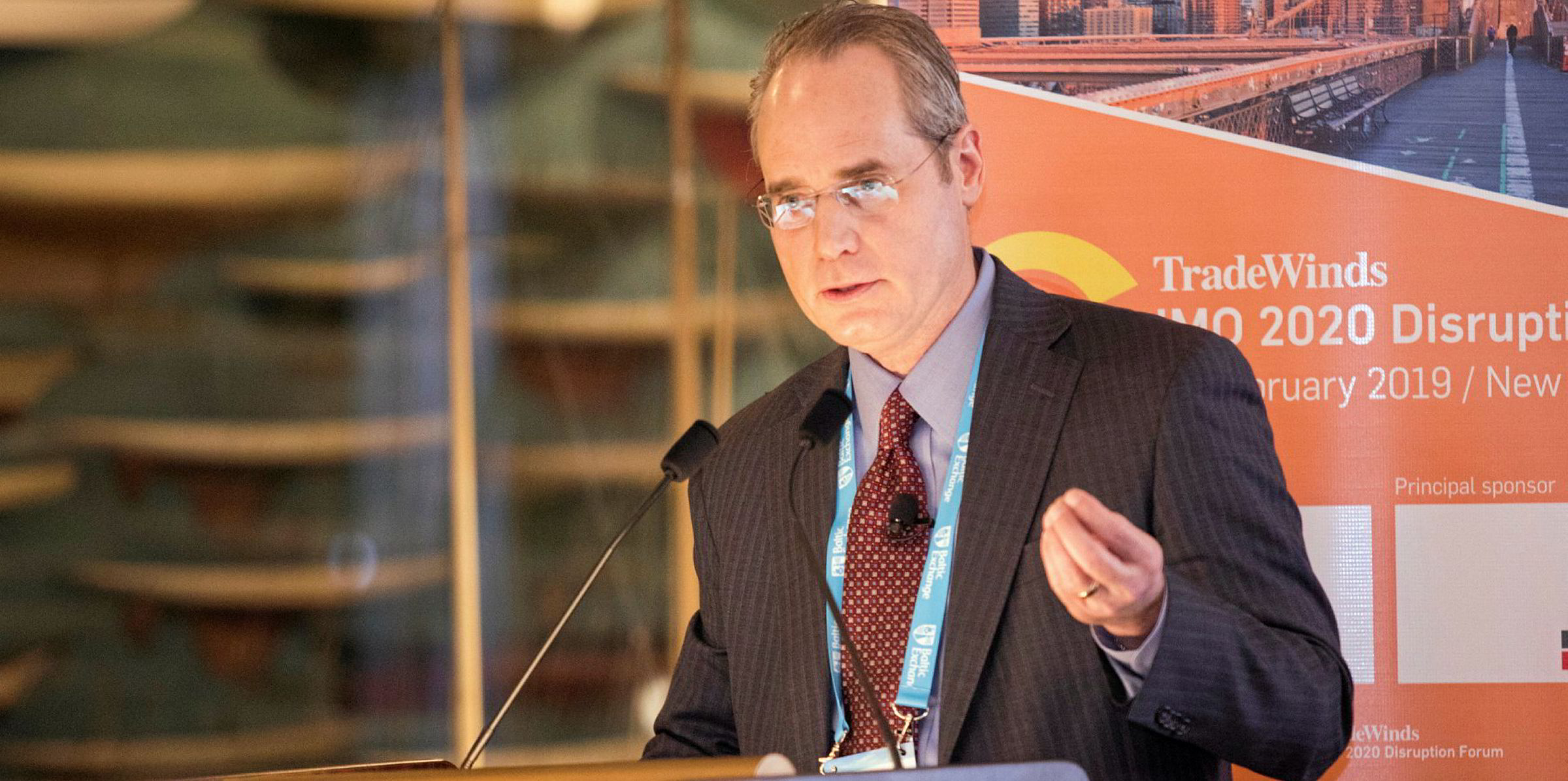There is going to be a significant difference in the prices of low and high-sulphur fuel oil once the IMO's emissions cap kicks in next year, according to Charles Kemp of Baker & O'Brien.
Speaking at TradeWinds' IMO 2020 Disruption Forum in New York on Thursday morning, Kemp said there was effectively no price floor for the high-sulphur fuel and that refineries are only now upgrading to produce the low-sulphur stuff.
“We do think that prices are going to be divergent between low-sulphur and high-sulphur," said Kemp, who started his career as a chemical engineer before becoming a petroleum economist 27 years ago.
Upgrade costs
“Refiners are going to spend billions of dollars on upgrading equipment.”
He said refineries were reticent to upgrade, which can take years and lots of money, as they were uncertain what the shipping industry would do.
But it takes between five and seven years for a refinery to make the most common upgrades, meaning it could be some time before the refineries are able to produce high volumes of compliant fuel, Kemp said.
Further, coal and natural gas are less expensive than the high-sulphur fuel, leaving, potentially, lots of supply and few takers.
“Not only is the new sulphur limit being increased by a factor of seven, but it is a change that impacts every country, every port and every ship on the open seas," Kemp said.
"Historically most regulatory changes to refinery products have been only for certain countries or regions, and its not this significant and not at the same time. Usually there’s some flexibility in trade flows.”




